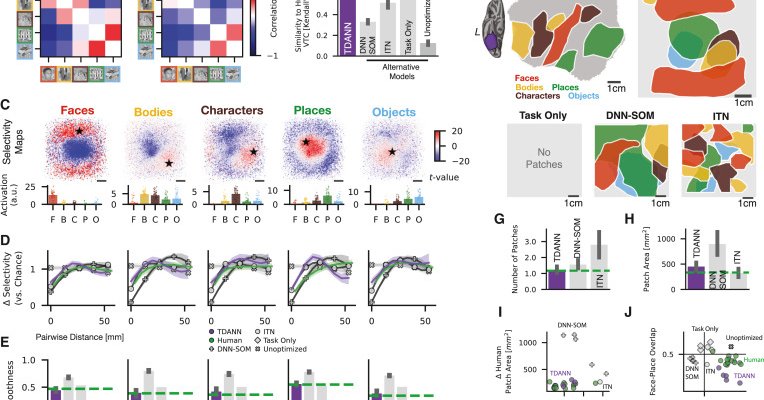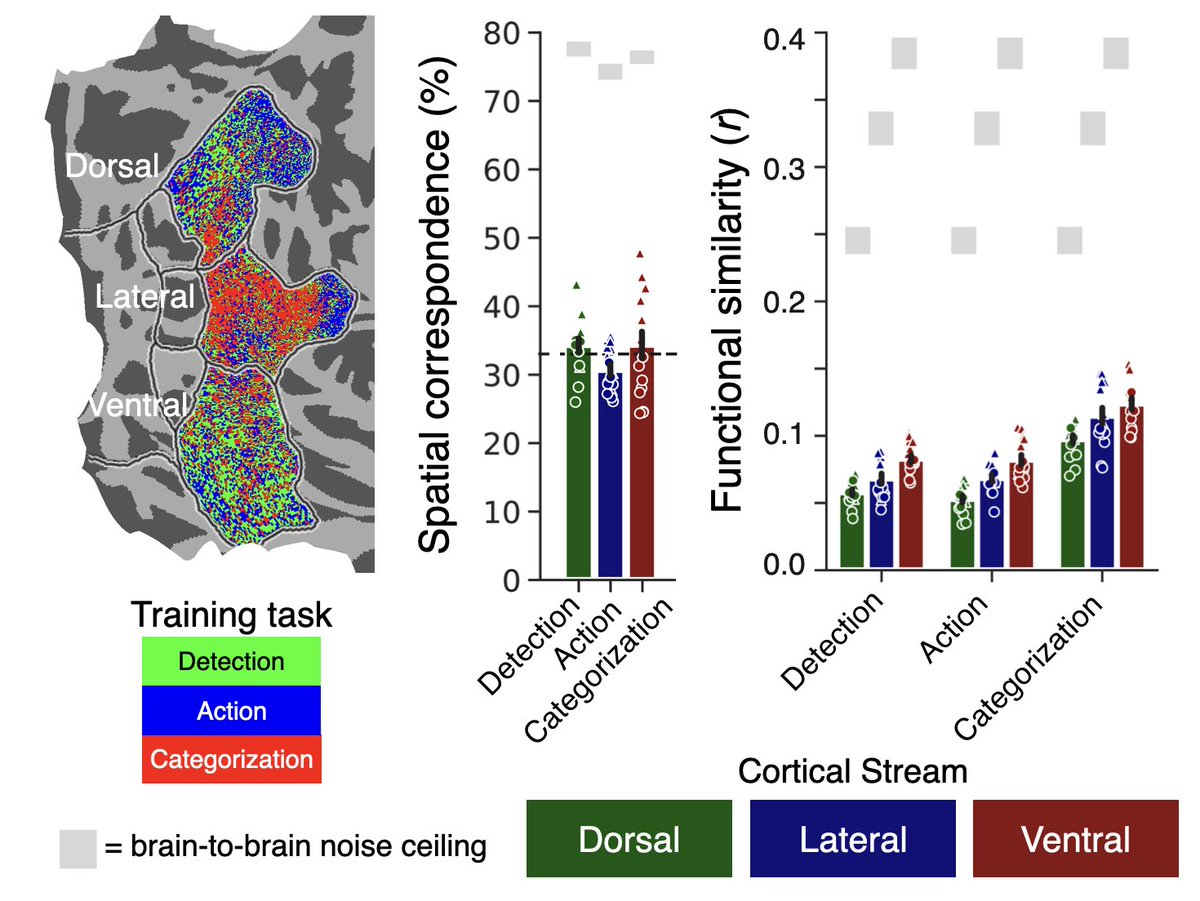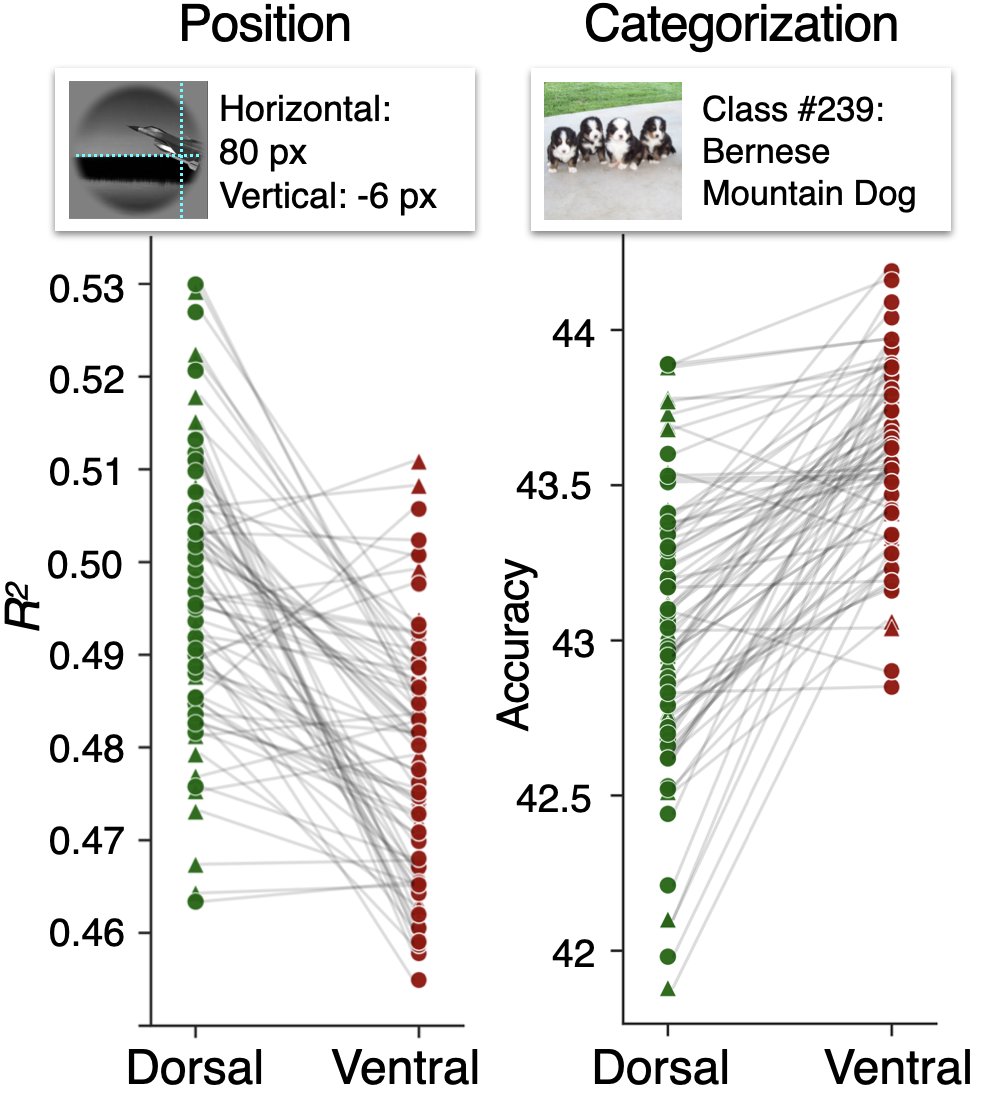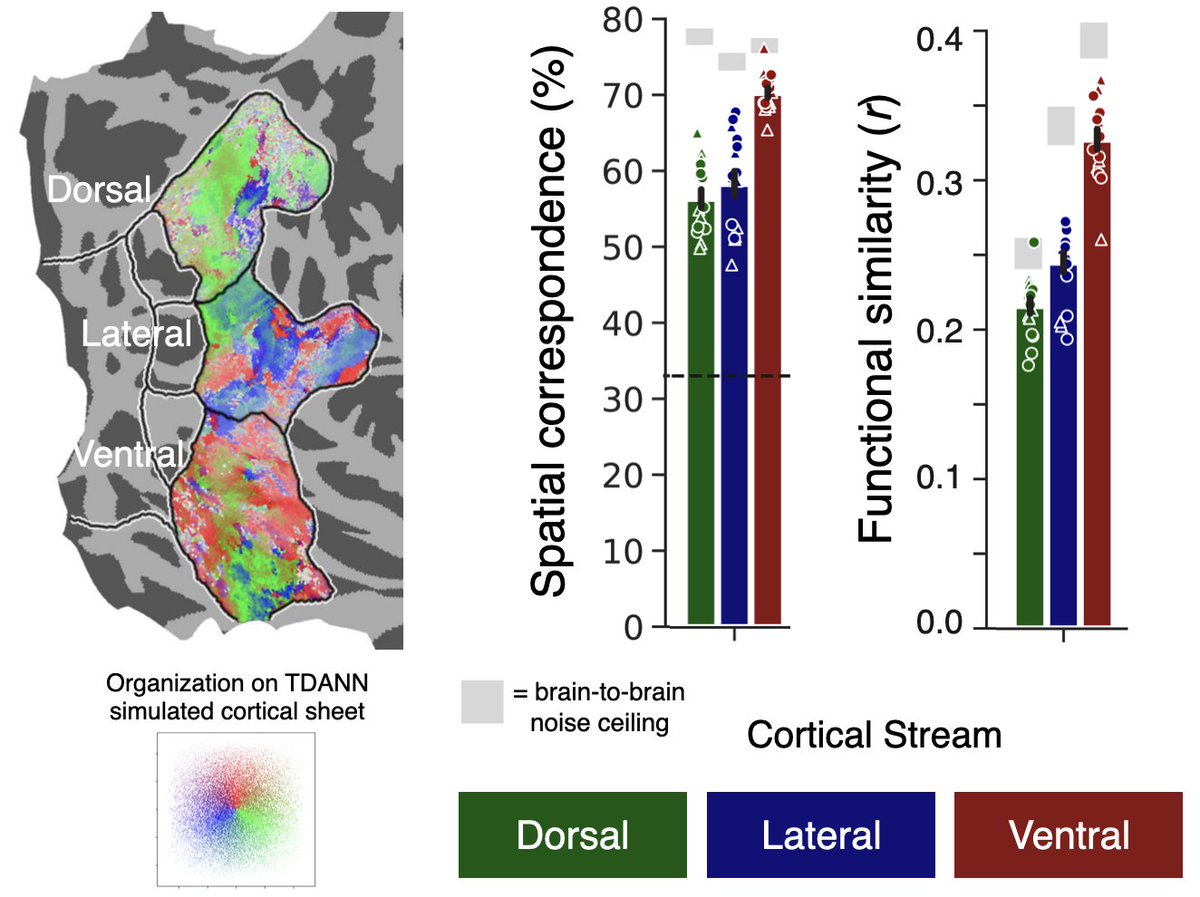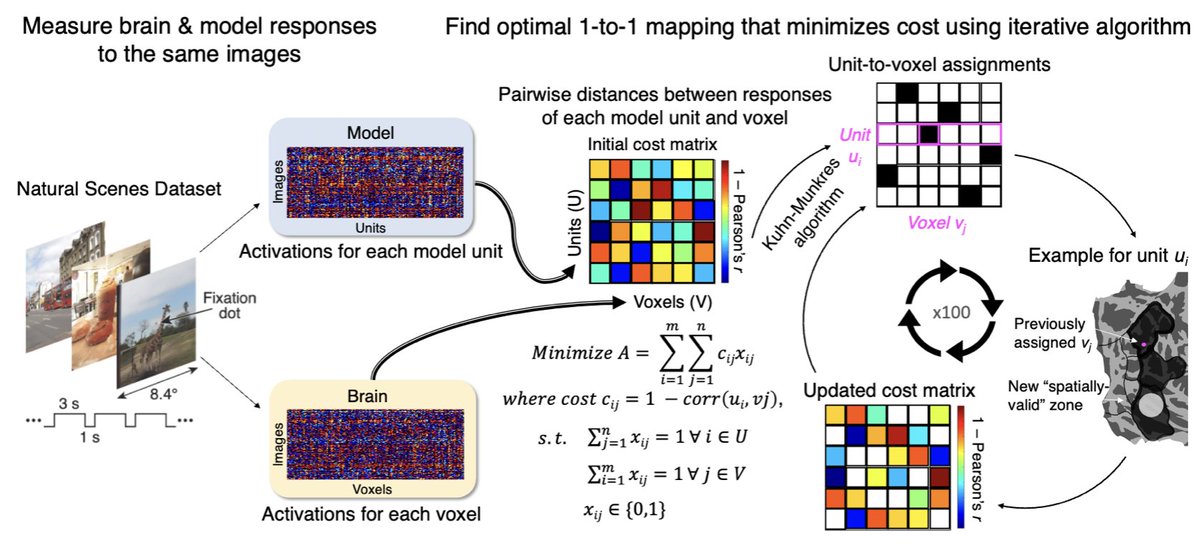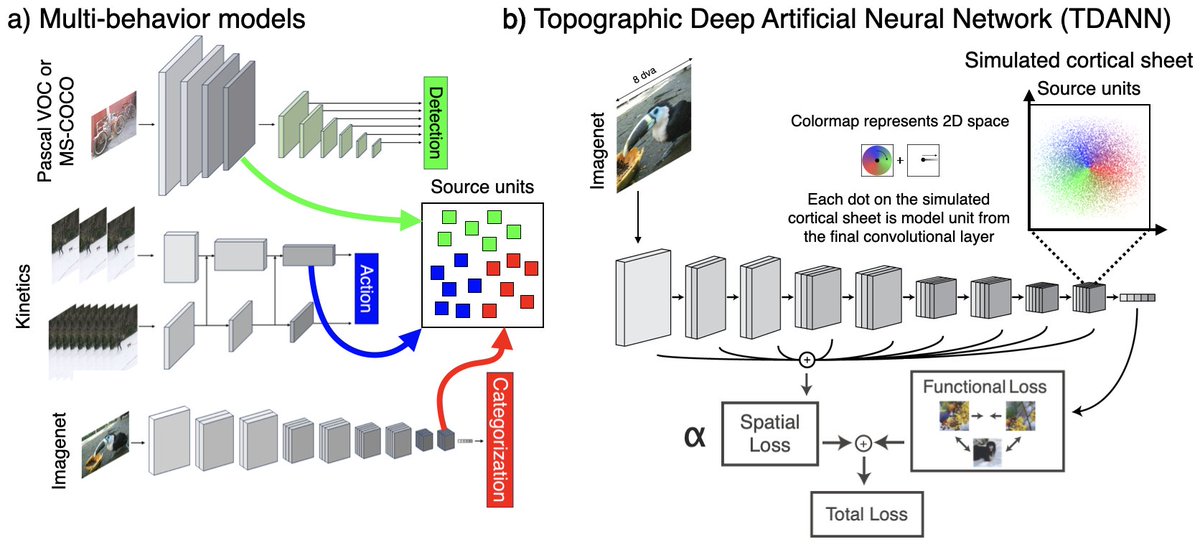
Dawn Finzi
@dfinz
Followers
634
Following
2K
Media
21
Statuses
280
Machine learning engineer in Perception @Zoox, @Stanford PhD
Joined July 2009
Pumped to share this work from my PhD, “A single computational objective drives specialization of streams in visual cortex”, just in time for the holidays! With the all star team @eshedmargalit , @cvnlab , @dyamins & @kalatwt .🔗:🧵: 1/n….
biorxiv.org
Human visual cortex is organized into dorsal, lateral, and ventral streams. A long-standing hypothesis is that the functional organization into streams emerged to support distinct visual behaviors....
7
65
295
RT @dyamins: 1/ Our work on unified principles for Topographic Deep Artificial Neural Networks is finally out in Neuron! 7 years in the mak….
cell.com
Margalit et al. develop a topographic artificial neural network that predicts both functional responses and spatial organization of multiple cortical areas of the primate visual system. In turn, the...
0
59
0
RT @AndrewLampinen: What is representational alignment? How can we use it to study or improve intelligent systems? What challenges might we….
0
28
0
13/ Lots of excellent work is being done on this topic; (@meenakshik93, @itsneuronal) for a recent fav.
1
0
8
8/ We then test these hypotheses to see if they can replicate human visual streams both spatially & functionally using the massive Natural Scenes Dataset (@Emsquem) - a high-resolution human fMRI dataset with cortical responses to ∼10,000 MS-COCO images in each of 8 participants.
1
0
5
6/ and implementing the spatial constraints hypothesis using the recently developed Topographical Deep Artificial Neural Network (TDANN; check out @eshedmargalit 's )
1
1
10


